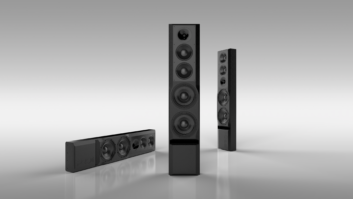I could hardly believe it when I read the news that Philips was pulling out of the North American (U.S. and Canada) TV market and licensing the procurement and sales rights to its Magnavox, Philco and Philips brands to Funai Electric.
The shock factor came from being told early in my career that when Philips enters a market, it’s in it forever.
But giving it a lot more thought, I saw that it shouldn’t have been surprising. In pulling out of the U.S. TV business Philips is following the lead of such giants as GE, Thomson of France, Rockwell International, GTE and Ford, just to name a few. They all threw in the towel because it’s almost impossible to make big profits in this market. But give Philips credit — it’s been 34 years since it spent $160.4 million to enter the U.S. TV arena through its 1974 purchase of Magnavox, so it hung in longer than most that tried to buy their way in.
As for Funai, I have long considered it a marvel of ingenuity, but at the same time I can’t think of a more unlikely candidate for such a coup, at least not if you look at its beginnings. Funai was launched in Japan in 1961 at a time when the industry there was thriving on the export of the Three T’s: transistor radios, mini tape recorders and transceivers (walkie-talkies). Japanese TVs were only black-and-white and clunky, and no one was making FM radios.
Funai, a start-up independent, was in head-to-head competition with dozens of little cottage-industry companies, most of which were gone by the end of the decade, and was dwarfed by such national giants as Hitachi, Matsushita, NEC, Pioneer, Sanyo and Sharp. Sony was just starting to stretch its legs.
As far I as I know, the first really innovative Funai product, the VHS tape player, arrived here under private label brands in the mid 1970’s.
Funai followed up with the first TV-VHS VCR combos, in both AC-only and AC-DC versions, and later with a mini portable TV, housing an 8mm video deck (carried by Radio Shack). Another innovation was the compact video cassette format. The CVC system never found a niche, and vanished when Sony’s 8mm system arrived.
Funai began selling TVs under its own brands here after obtaining the rights to the Symphonic name. In the 1990s it moved into the big time when it licensed the Emerson brand, and followed that by picking up the Sylvania video rights after it was dropped by Philips. Its brand stable now holds seven names and is poised to capture a double-digit HDTV market share here. Funai is also in the process of expanding its service network.
In January Funai signed an alliance with JVC that includes having all of its LCD TVs for North America made in JVC’s Mexican factory, while Funai Poland will make all the LCD TVs that JVC sells in Europe. And to show it isn’t going to be pushed around, late last year Funai filed with the U.S. International Trade Commission an unfair competition complaint charging Polaroid, Syntax-Brillian (Olevia), Vizio and 11 other importers and Chinese manufacturers with violating two HDTV patents covering automatic recognition of picture format and other features.













